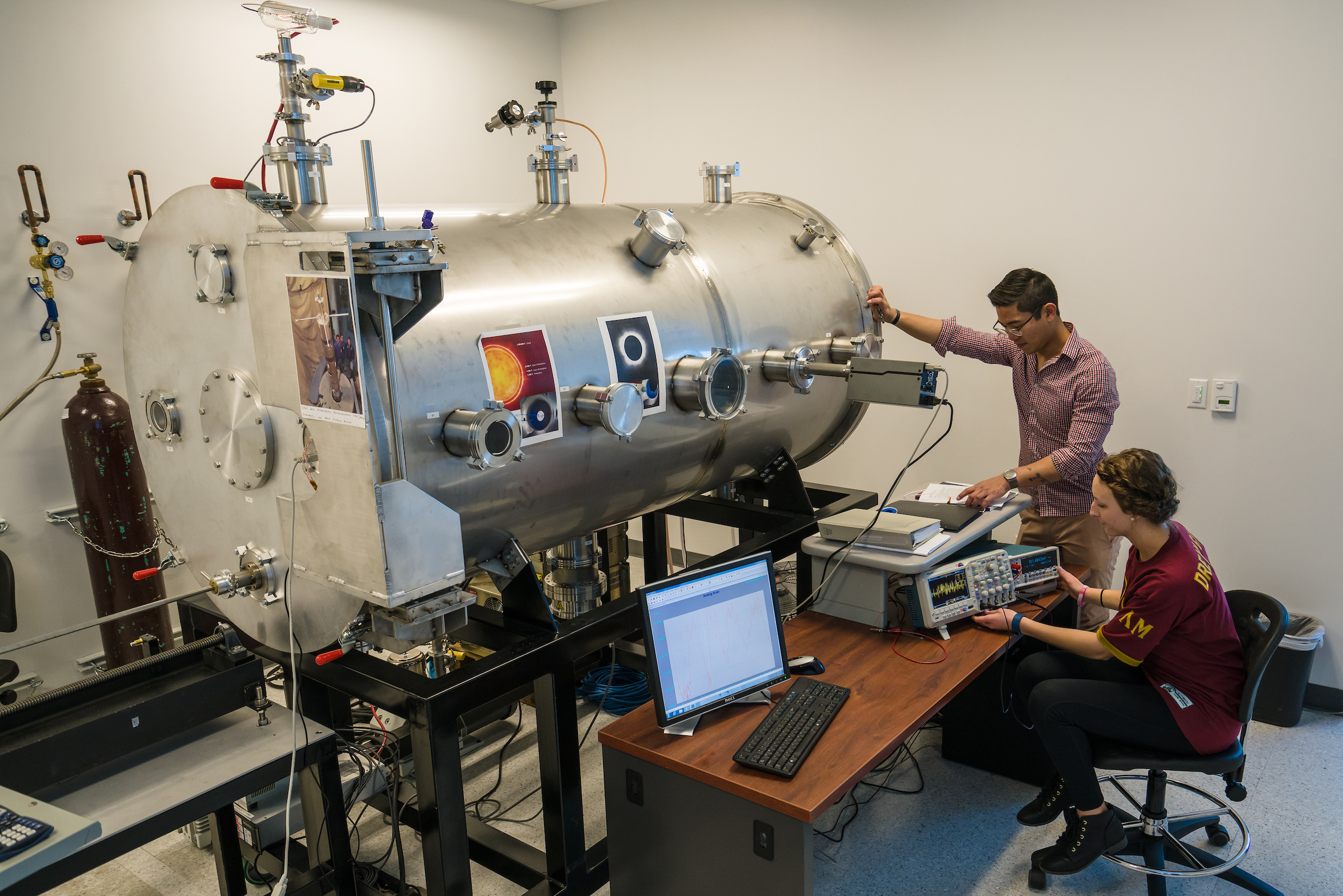One of SAIL’s 1500 sq ft lab space houses two plasma chambers. The larger cylindrical chamber is 2 meters long and 1 meter in diameter with a base pressure of 10e-7 torr. The chamber has two plasma source.
First, a filament-based thermal plasma source can generate a maximum plasma density of 10e9/cm3 and a maximum electron temperature of 5 eV. This low-density plasma source is used for characterization of plasma diagnostic instruments that are flown on rockets and satellites.
Second, a plasma gun (Spheromak) is available to generate a high-density magnetized plasma jet. This plasma is used to study fundamental plasma physics in space and solar physics as well as thermonuclear fusion. The lifetime of the plasma jet is approximately 10 microseconds and the jet speed is around 30 km/s. The density and temperature of the plasma are estimated to be 10e20/cm3 and 10 eV, respectively. The chamber primarily uses Argon and Nitrogen as the ionizing species but is capable of doing additional gas species at a time.
The plasma chamber is equipped with many diagnostic methods such as SAIL built and calibrated Langmuir probes for plasma characterization, a microwave probe with a network analyzer, a Residual Gas Analyzer, various thermocouples, a multi-cluster magnetic field probe, a 1-m spectrometer, an ICCD, an Nd:YAG laser (532 nm, 10 Hz, and 500 mJ/pulse), a He-Ne laser interferometer, and other various instruments in developmental stages.
The second plasma chamber is a Pyrex glass chamber, which is 18 inch in height and 12 inch in width. This chamber is used for doing dusty plasma experiments as well as outgassing testing for new materials. This smaller plasma chamber uses a glow discharge plasma source and gives a 360 degree view of experimental volume. Its base pressure is 2e-5 torr. This small plasma chamber is also used to study the geometry-dependent Paschen curve.


